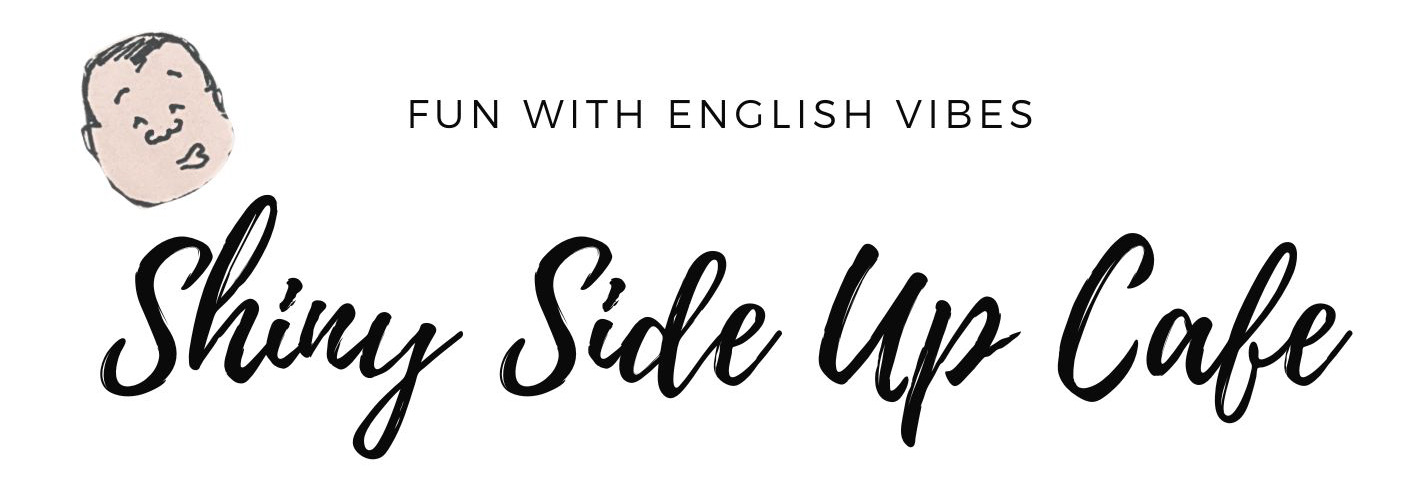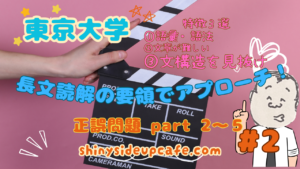(22) Documentary film began in the last years of the nineteenth century [a]with the first films ever projected, and it can take many forms. It can be a trip to exotic lands and lifestyles, as was Nanook of the North (1922). It can be a visual poem, such as Joris Ivens’s Rain (1929) – a story about a rainy day, [b]is set to a piece of classical music, in which the storm echoes the structure of the music. It can be [c]an artful piece of propaganda. Soviet filmmaker Dziga Vertov, who proclaimed that fiction cinema was poisonous and dying and [d]that documentary film was the future, made Man with a Movie Camera (1929) as propaganda [e]both for a political regime and for a film style.
(23) What is a documentary? A simple answer might be: a movie about real life. And that is precisely the problem : documentaries are about real life; they are not real life. They are [a]not even windows onto real life. They are portraits of real life, [b]using real life as their raw material, constructed by artists and technicians who make numerous decisions about [c]what story to tell to whom and for what purpose. You might then say: a movie that does its best to represent real life and [d]that it doesn’t manipulate it. And yet [e]there is no way to make a film without manipulating the information. Selection of topic, editing, and mixing sound are all manipulations. Broadcast journalist Edward R. Murrow once said, “Anyone who believes that every individual film must represent a ‘balanced’ picture knows nothing about either balance or pictures.”
(24) The problem of deciding how much to manipulate [a]is as old as the form. Nanook of the North is considered one of the first great documentaries, but its subjects, the Inuit assumed roles at filmmaker Robert Flaherty’s direction, [b]much like actors in a fiction film. Flaherty asked them to [c]do things they no longer did, such as hunt for walrus* with a spear, and he [d]represented them as ignorant about things they understood. At the same time, Flaherty built his story from [e]his own experience of years into with the Inuit, who happily participated in his project and gave him plenty of ideas for the plot. 注 *walrus セイウチ
(25) The importance of documentaries is [a]linked to a notion of the public as a social phenomenon. The philosopher John Dewey argued persuasively that the public – so crucial to the health of a democratic society – [b]is not just individuals added up. A public is a group of people who can act together for the public good [c]and so can challenge the deep-seated power of business and government. It is an informal body that can [d]come together in a crisis if necessary. There are as many publics as there are occasions and issues to call them forth. We can all be members of any particular public – [e]if we have a way to communicate each other about the shared problems we face. Communication, therefore, is the soul of the public.
今日は、東大の正誤問題の2回目、前回の続きの部分、残りの4題を説明していきます。
「東大の正誤問題は、文構造を追いかけて解いていくことが大切」
ということが、大きな特徴だと思います。今日もその練習をやっていましょう。
(22)から、 1文ずつみていきます。
この文を文構造をみやすく書いてみるとこうなります。
Documentary film began in the last years of the nineteenth century
with the first films ever projected,
and
it can take many forms.
訳すと、「ドキュメンタリー映画は、19世紀末に始まった。」
次のwith the first films ever projected,ここは付帯状況のwithですから
「最初の映画が上映されたのに伴って」となります。
it can take many forms.
そして、それはさまざまな形を取ることがきる。
和訳は次のようになります。「ドキュメンタリー映画は、19世紀末に最初に映画が投影された時代に始まり、さまざまな形を取っています。」
It can be a trip to exotic lands and lifestyles, as was Nanook of the North (1922).
この文は設問になっていませんが、“as was” の部分は、前の文脈で述べられたものを強調して、「〜であったように」「〜だったように」となります。一般的な書き方をすればこのようになり、倒置と省略があったことがわかります。
It can be a trip to exotic lands and lifestyles,
as Nanook of the North (1922) was (a trip to exotic lands and lifestyles).
和訳は「ドキュメンタリー映画は、『極北のナヌーク』(1922年)がそうであったような、異国の土地やライフスタイルへの旅であることがあります。」となります。
It can be a visual poem, such as Joris Ivens’s Rain (1929) – a story about a rainy day,
この文の書き出しは、「ドキュメンタリー映画は、ある雨の日の物語であるヨリス・イヴエンスの『雨』(1929年)のような,目で見るポエムであることがあります。」
次に
is set to a piece of classical music,
の部分ですが、「クラシック音楽」は、classical musicでOK。
ただし、 be set toは、「〜に合わせられる」「〜に調和する」というイディオムなのですが、is set toと書いてしまうとisの主語がありません。カンマ isでは前の文を修飾することもできず不自然です。
ちゃんと前にand (it )is set toとあればいいのですが、ここが間違いとなります。
in which the storm echoes the structure of the music.
そして、その中で嵐が音楽の構造を反映しているのです。
和訳すると「ドキュメンタリー映画は、雨の日に関する物語で、ヨリス・イヴエンスの『雨』(1929年)のようなクラシック音楽の楽曲がつけられたビジュアル詩であり、その中で嵐が音楽の構造を反映しているのです。」となります。
It can be an artful piece of propaganda.
この文は、「ドキュメンタリー映画は、巧妙なプロパガンダの一部になることがあります。」で問題ありません。
最後の文を文構造がわかりやすいように書き出すとこうなります。
Soviet filmmaker Dziga Vertov,
who proclaimed that fiction cinema was poisonous and dying
and
that documentary film was the future,
made Man with a Movie Camera (1929)
as propaganda both for a political regime and for a film style.
and thatは、前のproclaimed that A and that B の形で文法的に問題はありません。
Andがthat節を2つ繋げているときは、動詞that A and that Bとし、2つ目のthatを省略することはできません。
次の下線部は前の問題setの箇所のひっかけとも考えられます。
ここでのmadeは、後ろに映画名の目的語があるので動詞の過去形です。過去分詞ではありません。
made Man with a Movie Camera (1929) as propaganda both for a political regime and for a film style.
つまりこの文は,who以下the future,までがデジャ・ヴェルトフの説明部分で関係代名詞の非制限的用法で説明をしている部分だと見抜けたかということになります。
Soviet filmmaker Dziga Vertov, (who proclaimed…), made Man with a Movie Camera (1929) as propaganda both for a political regime and for a film style.
和訳は「ソビエトの映画製作者であるデジャ・ヴェルトフは、フィクション映画が有害であり衰退しており、ドキュメンタリー映画こそが未来であると宣言した人ですが、彼は政治体制と映画のスタイルの両方のために、『映画カメラを持つ男』(1929年)をプロパガンダとして製作しました。」となります。
(23) What is a documentary? A simple answer might be: a movie about real life. And that is precisely the problem : documentaries are about real life; they are not real life. They are [a]not even windows onto real life. They are portraits of real life, [b]using real life as their raw material, constructed by artists and technicians who make numerous decisions about [c]what story to tell to whom and for what purpose. You might then say: a movie that does its best to represent real life and [d]that it doesn’t manipulate it. And yet [e]there is no way to make a film without manipulating the information. Selection of topic, editing, and mixing sound are all manipulations. Broadcast journalist Edward R. Murrow once said, “Anyone who believes that every individual film must represent a ‘balanced’ picture knows nothing about either balance or pictures.”
(23)最初の2文を訳してみます。
What is a documentary?
A simple answer might be: a movie about real life.
「ドキュメンタリーとは何だろうか。簡単な答えは,現実生活に関する映画、となるかもしれない。」
And that is precisely the problem : documentaries are about real life; they are not real life.
「そして,それこそがまさしく問題なのである。ドキュメンタリーは実際の人生についてですが、実際の人生ではないのです。」
次は下線部の箇所ですが、
They are not even windows onto real life.
Evenは否定を強めて「~ですらない」
ontoは、「〜に対する」「〜への」
で、和訳すると「ドキュメンタリーは、実際の人生への窓でさえありません。」となります。
ここではwindowsを比喩的に使っていますが、言い換えれば
Documentaries don’t even show us what real life is like.ということのなります。
次の文は複雑ですので、1文ずつ見ていきます。
They are portraits of real life,
ドキュメンタリーが実際の人生の肖像であり、
using real life as their raw material,
「素材として現実生活を使用していて」
constructed by artists and technicians who make numerous decisions
「多くの決定を行っているアーティストや技術者によって作られ」
となります。
文構造的にわかりやすく説明すると
And documentaries are を補って考えれば
And documentaries are using
And documentaries are constructed で文が成立してます。
そして、次に、about what story to tell to whom and for what purpose.ですが、
Aboutが以下が複雑なので、文構造をわかりやすく書き出すと
about what story to tell to whom
and
for what purpose.
となり、こうやって考えることができれば、
「誰に対してどのような物語を言うべきか」
「どんな目的で」
と訳せると思います。
もう一度まとめて訳してみると
「ドキュメンタリーが実際の人生の肖像であり、素材をとして現実生活を使用し、アーティストや技術者が誰に何の目的でどのようなストーリーを伝えるかについて多くの決定を行っているのです。」となります。
You might then say: a movie that does its best to represent real life and that it doesn’t manipulate it.
この部分も前の文にでてきているproclaimed that A and that B をひっかけとして作っているのかもしれません。
You might then say:あなたは言うかもしれない。の次
a movie that does its best to represent real life and that it doesn’t manipulate it.は
文構造を見やすくすると次のようになります。
a movie that does its best to represent real life
and
that it doesn’t manipulate it.は
最初のa movie thatは関係代名詞のthatで、「現実生活を描写するために最善を尽くす映画」となります。
And の後ろのthat ですが、thatの後ろにit doesn’t manipulate it.はSVO揃った完璧な文になりますから、関係代名詞のthatではないことがわかります。関係代名詞の後ろは名詞が1個欠落した文でなけれればならないので、間違いだと気づけます。なので、ここでは、and that itが余計だということになり、
A movie that does its best to represent real life and doesn’t manipulate it
こう直せば、「最善を尽くして現実生活を描写し,現実生活を操作していない映画」となります。
次の文は、
And yet there is no way to make a film without manipulating the information.
「情報を操作せずに映画を作る方法はありません。」で問題ありません。
最後の文も和訳しておきます。
Selection of topic, editing, and mixing sound are all manipulations.
Broadcast journalist Edward R. Murrow once said, “Anyone who believes that every individual film must represent a ‘balanced’ picture knows nothing about either balance or pictures.”
「トピックの選択、編集、音声のミックスはすべて操作です。放送ジャーナリストのエドワード・R・マローはかつて、『すべての個々の映画が ‘バランスの取れた‘ 映像を表現しなければならないと信じる人は、バランスや映像について何も知らない』と述べました。
(24) The problem of deciding how much to manipulate [a]is as old as the form. Nanook of the North is considered one of the first great documentaries, but its subjects, the Inuit assumed roles at filmmaker Robert Flaherty’s direction, [b]much like actors in a fiction film. Flaherty asked them to [c]do things they no longer did, such as hunt for walrus* with a spear, and he [d]represented them as ignorant about things they understood. At the same time, Flaherty built his story from [e]his own experience of years into with the Inuit, who happily participated in his project and gave him plenty of ideas for the plot. 注 *walrus セイウチ
(24)次の問題にいきます。
The problem of deciding how much to manipulate is as old as the form.
最初の1文ですが、formにtheがついているので、
これまで述べられてきたもの、「ドキュメンタリーの形式」ということがわかります。
和訳すると「どれだけ情報を操作するかを決定する問題は、ドキュメンタリーという形式自体と同じくらい古いものです。」となります。
Nanook of the North is considered one of the first great documentaries,
和訳すると「北のナヌークが最初の偉大なドキュメンタリーの1つと考えられています。」となります。
but its subjects, the Inuit assumed roles at filmmaker Robert Flaherty’s direction,
この文は、subjectsが「被写体」The Inuitは「イヌイット人・イヌイット族の人たち」を表す複数形の名詞です。なので和訳は、「しかし、その被写体であるイヌイットの人たちは、映画製作者のロバート・フラハティの指示に従って役割を演じました。」となります。
次は設問の部分ですが、
much like actors in a fiction film.
「これは、フィクション映画の俳優と同様の役割であった。」
で問題ありません。
次の文もわかりやすく書いてみるとこんな風になります。
Flaherty asked them to do things they no longer did,
such as hunt for walrus with a spear,
and
he represented them as ignorant about things they understood.
ここでのthemは「イヌイットの人たち」ですから
Flaherty asked them to do things they no longer did,
「フラハティは彼らがもはやしなくなったことを行うよう要求し、」
such as hunt for walrus with a spear,
「彼らに槍でセイウチを狩るなど、」
he represented them as ignorant about things they understood.
「彼らが理解していることについて無知であるかのように彼らを表現した。」
となります。
At the same time,
Flaherty built his story from his own experience of years into with the Inuit,
この文では、前置詞が2つつながっています。前置詞が2つ連続することはまれです。From behind the curtain「カーテンの後ろから」とかに限られます。
「イヌイット族と一緒に過ごした経験」と言いたいのなら
Flaherty built his story from his own experience of years (when he was) living with the Inuit
Flaherty built his story from his own experience of years (that he) spent with the Inuit.
こうすれば、「フラハティがイヌイットと過ごした数年間の経験から物語を構築しました」となります。
次の文も訳しておきます。
who happily participated in his project and gave him plenty of ideas for the plot.
「イヌイットは、喜んで彼のプロジェクトに参加し、プロットのために彼にたくさんのアイデアを提供しました。」
(25) The importance of documentaries is [a]linked to a notion of the public as a social phenomenon. The philosopher John Dewey argued persuasively that the public – so crucial to the health of a democratic society – [b]is not just individuals added up. A public is a group of people who can act together for the public good [c]and so can challenge the deep-seated power of business and government. It is an informal body that can [d]come together in a crisis if necessary. There are as many publics as there are occasions and issues to call them forth. We can all be members of any particular public – [e]if we have a way to communicate each other about the shared problems we face. Communication, therefore, is the soul of the public.
最後の問題はすぐにわかると思います。頻出問題です。下線部(e)のEach otherは副詞ではないので、communicate with each otherとしなければなりません。
いかがでしたか?今日は東大の正誤問題に挑戦してみました。語法、文法的な知識が問われることはまちがいありませんが、文構造も考えるアプローチをすることを忘れないでくださいね。


コメント